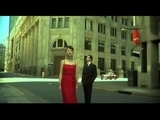
ANNOUNCEMENT
The dance season and group dance classes will resume in October.
More information here.

Tango Poems and Tango Lyrics
In the early years of tango, tango lyrics were generally comic. They were usually written in the first person, and described some excellent quality that the character possessed. As the popularity of tango grew in Paris and across the world, there started to be a market for tango music and tango recordings amongst the middle and upper classes in Argentina. This put pressure on both the tango music and the tango lyrics to change.
From about 1917 onwards a new sort of tango lyric began to be written. Many of finest poets that Argentina and Uruguay have ever produced have written tango lyrics. And as the tango lyrics improved in quality, this was also the period when great tango singers began to emerge, and then to dominate the tango scene. Alongside the development of the tango as an instrumental form, the tango-song form started gaining popularity in the mid-1920's. Many of the first tangos with lyrics were included in the popular theater form known as sainete. Singers, both male and female, adopted these new songs into their repertoire. They were mostly accompanied by guitars. Among the most popular singers of the first generation were Carlos Gardel (1890-1935), Ignacio Corsini (1891-1967), Agustin Magaldi (1901-1938), Azucena Maizani (1902-?), Rosita Quiroga (1901-1984), Mercedes Simone (1904-?) and Libertad Lamarque (1909-1999), all of whom were very popular and recorded prolifically.
Carlos Gardel was born on December 11, 1890 in Toulouse, France (as Charles Romuald Gardes), his mother brought him to Argentina at 27 months of age. Gardel's career was cut short in 1935, he lost his life in a plane crash in Medellin , Colombia on June 24, 1935. He recorded hundreds of songs and created some of the most beautiful renditions of classics such as Volvió Una Noche, El Día que me Quieras, Tomo y Obligo, Madreselva and Mi Buenos Aires Querido. He was to become very popular throughout Latin America by the exposure provided by the new media of radio and film. The 1940's also saw a rise of the tango-song form that was propelled by a new generation of singers, most notably Roberto Goyeneche (1926-1994), Alberto Podesta (1924- ), Francisco Fiorentino (1905-1955), Alberto Castillo (1914- ) and Angel Vargas (1904-1959).
Some of the most famous lyricists were Enrique Santos Discepolo, Homero Manzi (1907-1951), Catulo Castillo (1906-1975), Homero Exposito (1918-?) and Enrique Cadicamo (1900-). Their lyrics went beyond the traditional theme of love and dissapointment, creating portraits of life and philosophy. Among the hundreds of titles one must at least mention Uno (Discepolo, with music by Mariano Mores), Sur (Manzi-Troilo), La Ultima Curda (Castillo-Troilo), Malena (Manzi-Demare) and Los Mareados (Cadicamo-Cobian) etc.

Tango Lyrics
All A B C D E F G H I J K L M N O P Q R S T U V W X Y Z







